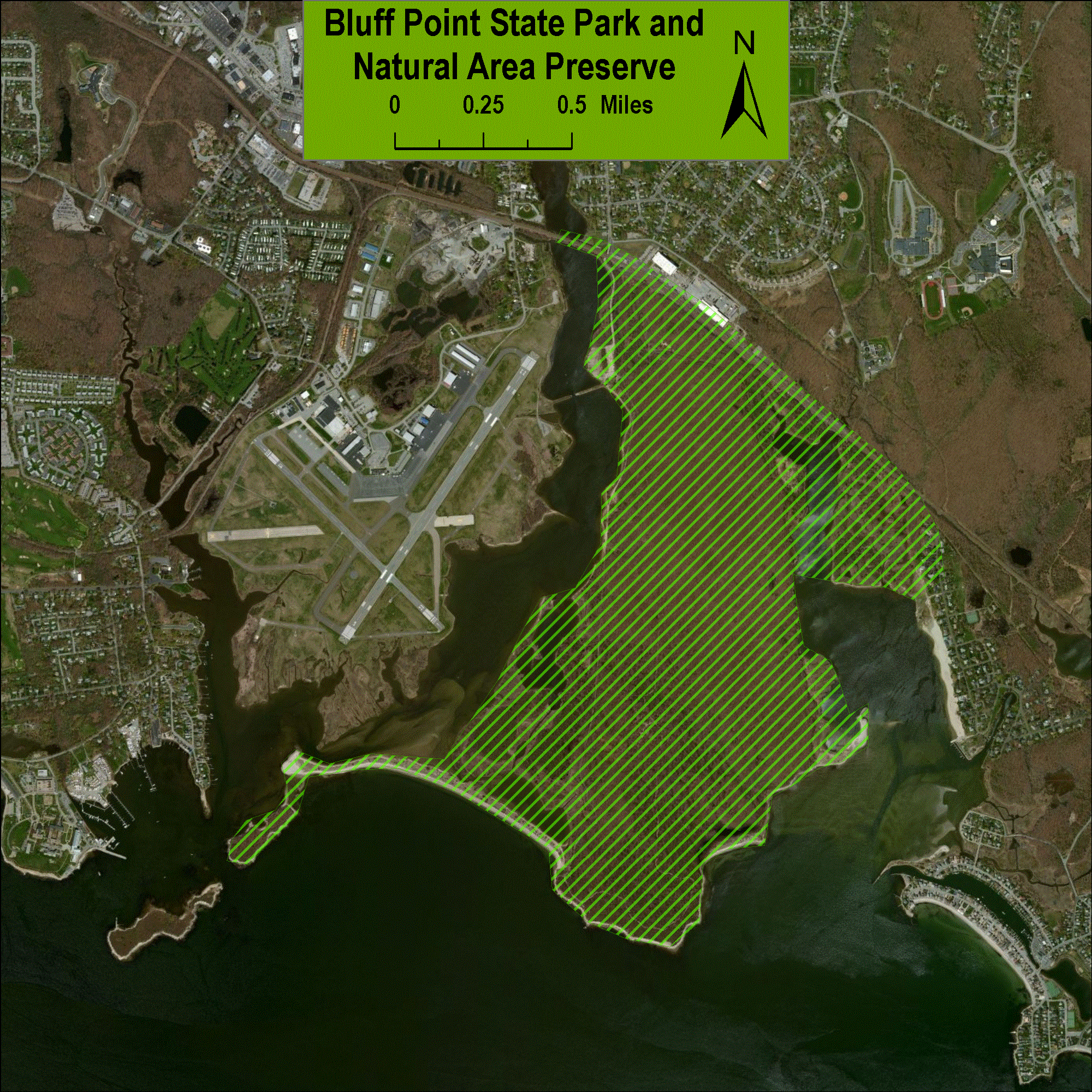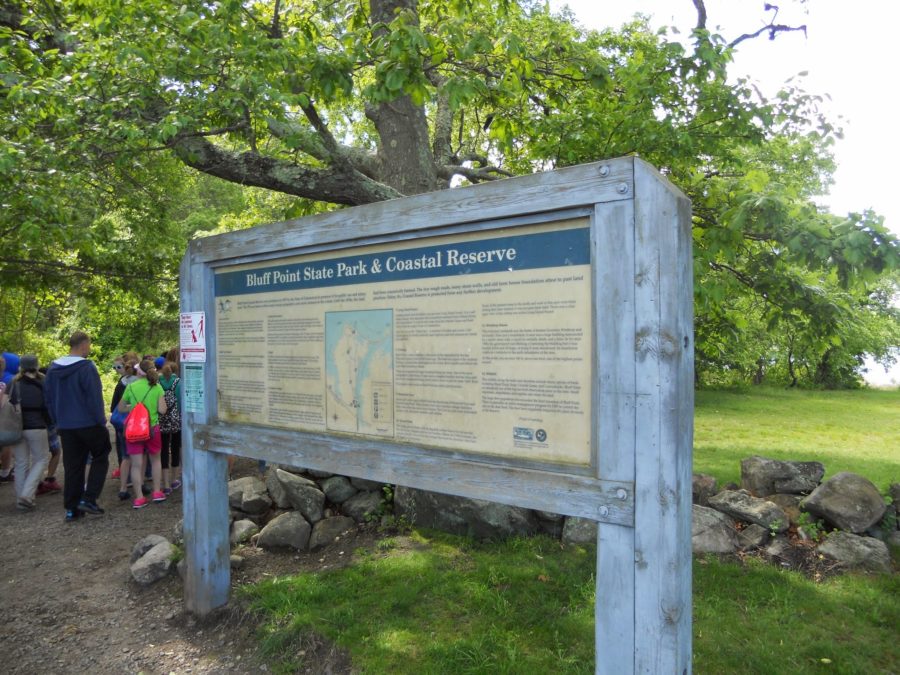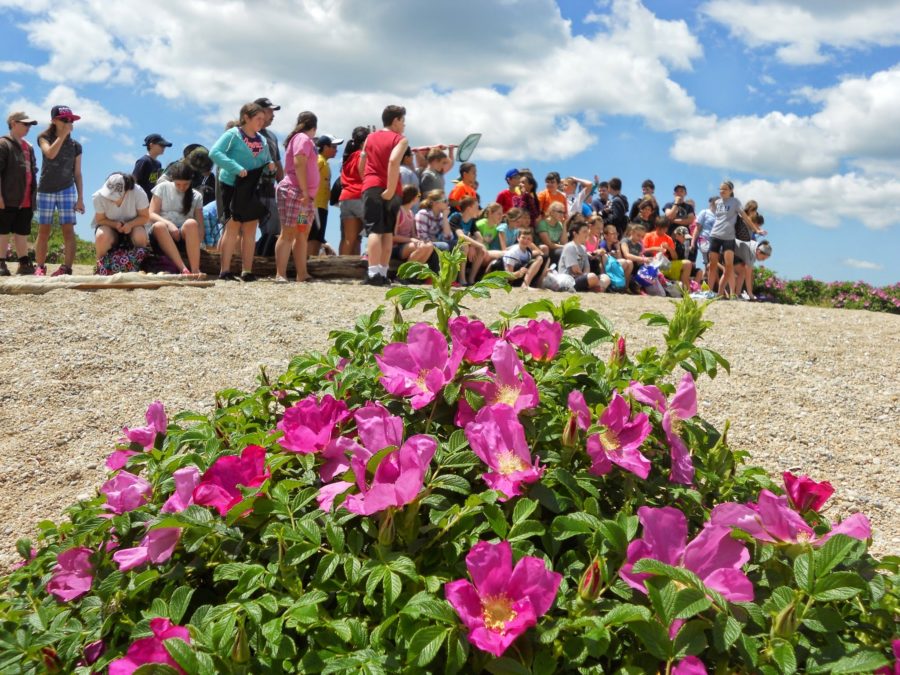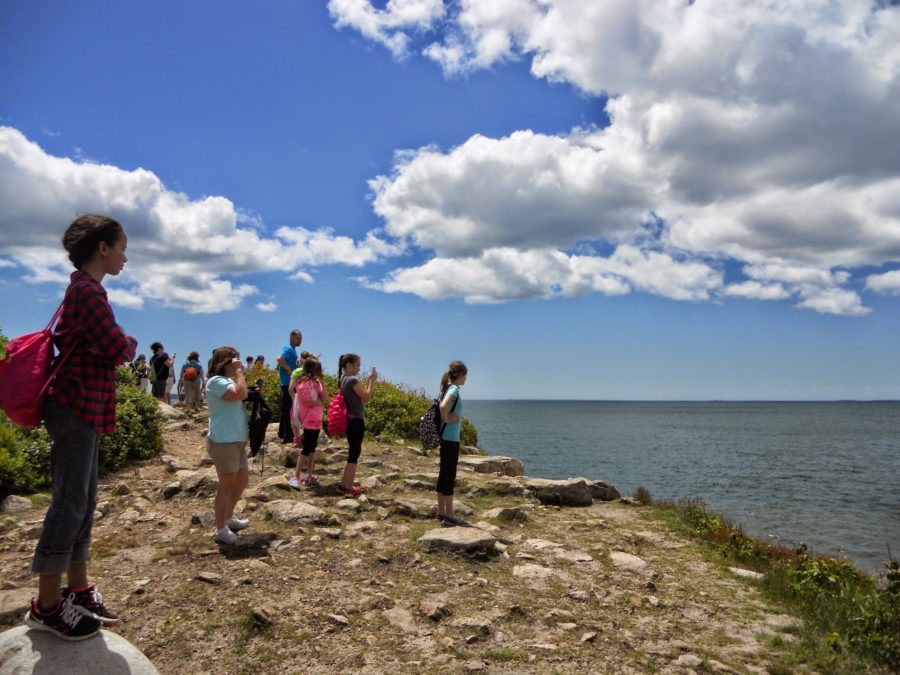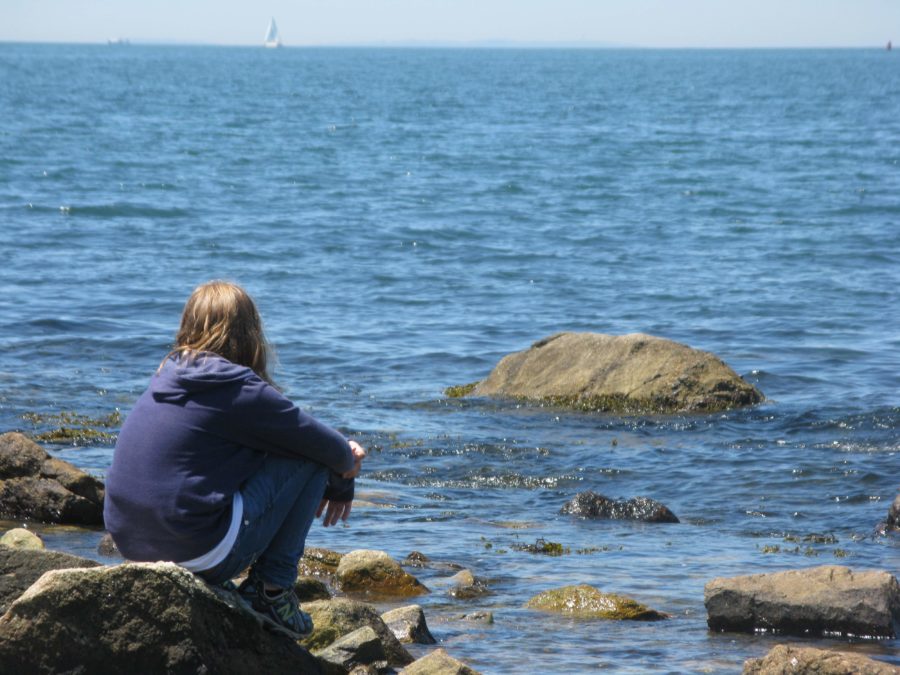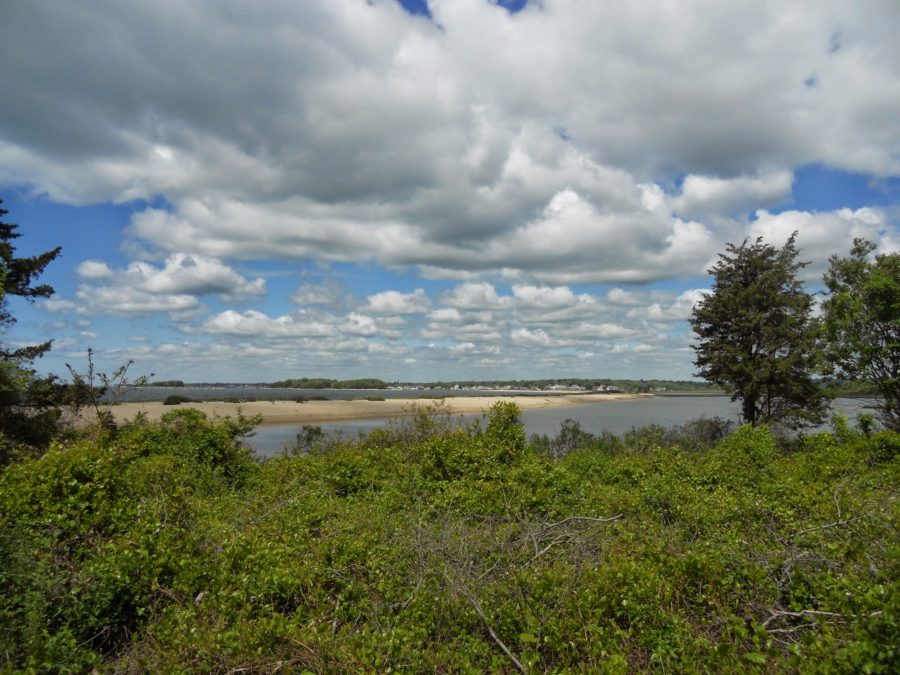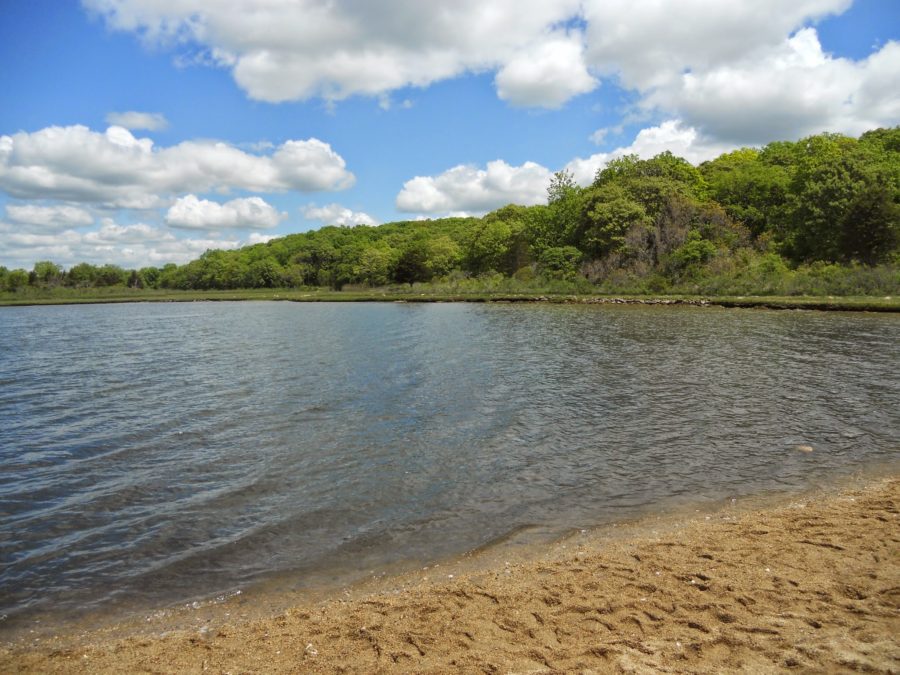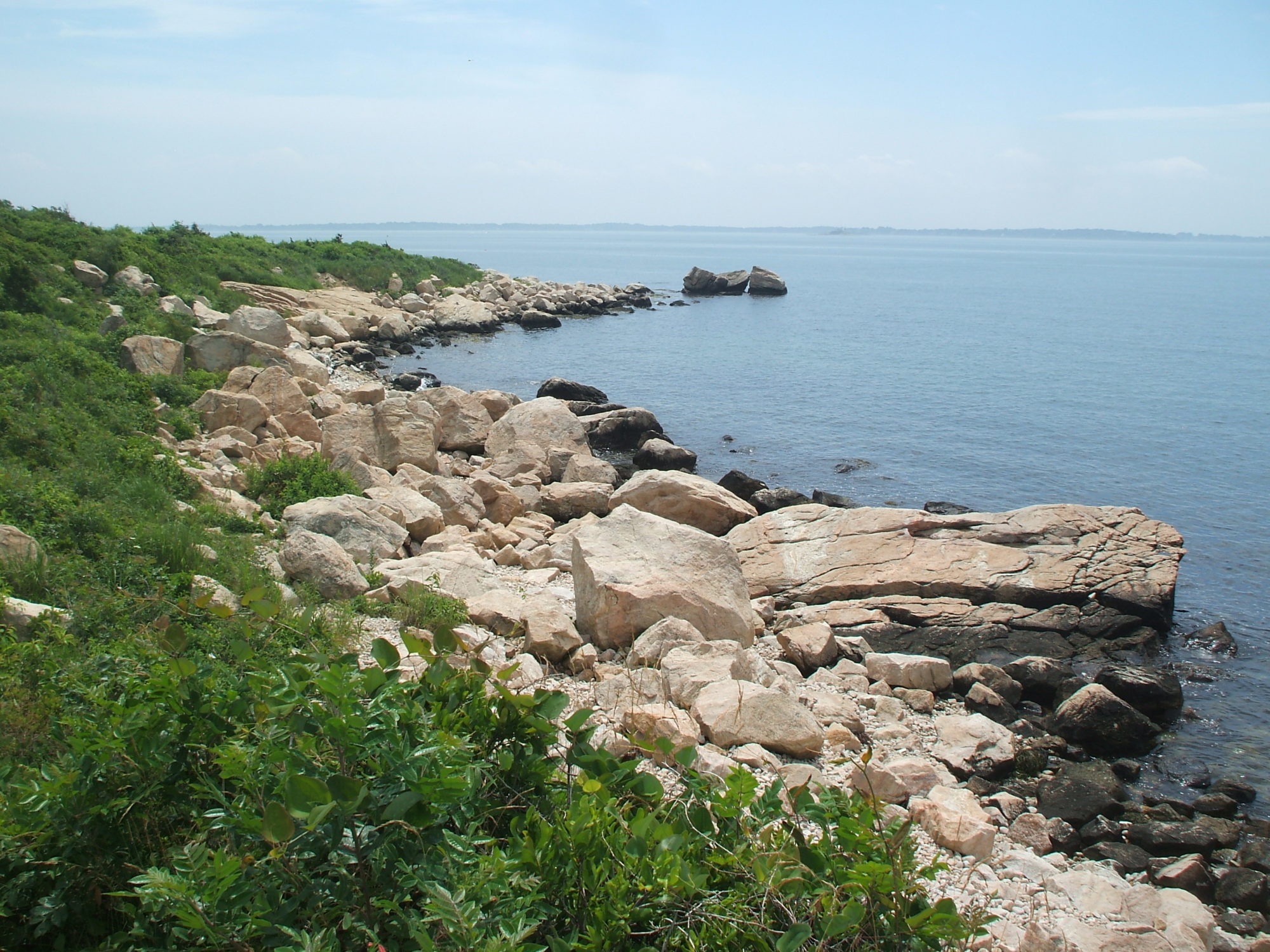Return to Main Stewardship Atlas Page
Bluff Point
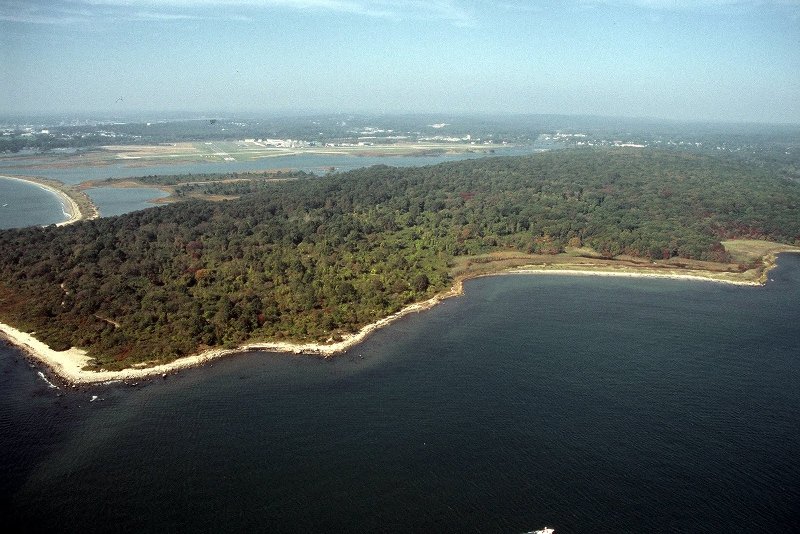
Location
Groton, CT
Anchor Site(s)
Bluff Point State Park and Coastal Reserve
About the Site
Bluff Point is a state-owned peninsula often considered the last significant undeveloped area on the Connecticut coastline. In 1975, the Connecticut Legislature designated a portion of Bluff Point as a “Coastal Reserve” in recognition of its ecological importance and to preserve its ecological integrity. This mostly forested 800-acre site contains a variety of habitats supporting state-threatened and endangered species.
Juliana Barrett, a coastal habitat specialist with Connecticut Sea Grant, highlights Bluff Point State Park in Groton, CT. Bluff Point showcases many different habitats, all located within 800 acres.
- The property includes a variety of coastal habitats including coastal forest, beach and dune, grassland, coastal plain pond, coastal bluff, tidal wetlands, intertidal mudflats, eelgrass beds, and back-beach sandflat.
- More than 200 bird species are found here, including various herons, hawks, cormorants, and federally-threatened piping plover.
- Removal of a wastewater treatment plant discharge to Mumford Cove on the east side of Bluff Point resulted in the spontaneous restoration of eelgrass, a species of submerged aquatic vegetation providing critical habitat for shellfish, finfish, and waterfowl.
- The southeast section of Bluff Point is a designated Connecticut Natural Area Preserve. The designation is due in part to a unique coastal forest on a concave slope, known as a ‘cove forest,’ which supports trees that are about 100-years old.
- Bluff Point State Park is one of the locations that has been nominated for Connecticut’s first National Estuarine Research Reserve (NERR). View a map of the proposed site here.
- Take a two-mile round-trip hike, from the parking area to the bluff along with the dirt, for one of the finest views of eastern Long Island and Fishers Island Sound.
- Walk another two miles from the bluff along the beach spit to its terminus at Bushy Point.
- Use the car-top launch at the parking area to paddle the Poquonnock River and other nearby embayments.
- Bird-watch within a variety of habitats that support more than 200 species of birds.
- Check listings at the Denison Pequoutsepos Nature Center website and other area nature centers for guided hikes.
- Go shell fishing (if you have a permit from the Town of Groton), or bring your pole to fish from the shore.
- Find the pedestrian bridge in the northeast corner of the park for access to Haley Farm State Park. The park contains coastal grasslands, an increasingly rare vegetation community along Connecticut’s coast.
- The Geology of Bluff Point State Park
This web page from CT DEEP describes various rock faces to be observed while navigating Bluff Point and provides a geological description of their development. Complete with photos, this is an excellent guide to understanding the historical formation of this area. - The Biology of Bluff Point State Park
To help understand the incredible wildlife of Bluff Point, CT DEEP describes Bluff Point’s biology by separating it into plants, birds, other vertebrates, and invertebrates.
- Visit the Poquonnock River Boardwalk for a quick and easy hike along the Poquonnock River. The trail is completely level, making it accessible to those in wheelchairs and to families with small children who need to bring strollers.
- Head west to see the recently restored Avery Point Lighthouse, which was constructed in 1943—the last lighthouse to be built in the state of Connecticut. Parking fees may apply.
- The nearby Esker Point Beach is a great place to relax, have a picnic, and go for a swim. Be sure to bring your furry friend along, as leashed dogs are allowed on the beach year-round.
- For other nearby hiking locations, check out the Avalonia Land Conservancy and Groton Open Space Association properties in the area.
- Oh, Ranger! provides an overview of Bluff Point, comments on the weather, and suggestions for how to engage in various recreational activities there such as boating and horseback riding.
- The CT DEEP web page on Bluff Point describes the site and provides information on its boat launch, complete with photographs.
- CT DEEP provides a one-page trail map that you can print out and bring on your next visit.
- Before biking at Bluff Point, check the Bikenetix web page for current weather, trail map, and description of various checkpoints along the popular four-mile loop around the peninsula.
- Because of its designation as a “Natural Area Preserve,” portions of Bluff Point so designated can only be accessed by foot or non-motorized vehicle.
- Routes leading to parking areas are posted with brown and white Long Island Sound Access signs.
- Be sure to stay on trails and not disturb the site’s fragile habitats.
- Note the safety of consuming various types of fish caught in the Long Island Sound by checking advisories by the Connecticut Department of Public Health.
- Shell fishing requires a permit administered by the Town of Groton’s Shellfish Commission.
- The Biology of Bluff Point State Park. portal.ct.gov/DEEP/State-Parks/Parks/Bluff-Point-State-Park/Biology. CT DEEP. Web. June 15, 2021.
- The Geology of Bluff Point State Park. portal.ct.gov/DEEP/State-Parks/Parks/Bluff-Point-State-Park/Geology. CT DEEP. Web. June 15, 2021.
